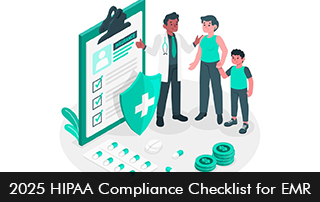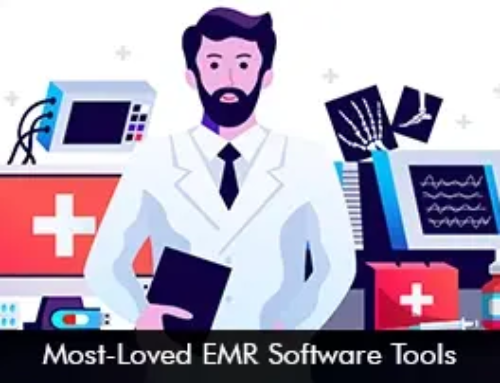Vendors must ensure robust cybersecurity measures because data is digital and stored in Electronic Medical Records (EMR) Software. HIPAA sets the rules across the country for keeping private health details safe and sound, so they’re not shared without a patient’s permission. For electronic health records software, HIPAA is a must to keep health information safe and ensure people trust their doctors and hospitals.
Data Breaches in the USA
In 2024, the U.S. healthcare industry faced an unprecedented 725 data breaches, which impacted more than 133 million patient records. Most notably, the Change Healthcare incident affected around 190 million people. These events highlight the urgent need for stronger data protection in the healthcare field.
2025 HIPAA Compliance Checklist for EMR Software Users
To stay on the right side of HIPAA rules in 2025, anyone using Electronic Medical Records (EMR) Software should pay close attention to these key areas:
- Risk Analysis and Management
- It’s important to regularly check for weak spots in the EMR System. Think of it like giving a system a security checkup.
- Once users find any risks, take steps to fix them. This will help keep patient information private, accurate, and available when needed.
- Access Controls
- Ensure everyone who uses the EHR Software has their unique login.
- Give people access only to the information they need for their job. This is called role-based access, and it helps keep sensitive information safe.
- Set up the software system to automatically log people out after a period of inactivity. This prevents strangers from gaining access if someone forgets to log out.
- Use Audit Trails
- Turn on audit logs to keep track of who looks at or changes patient information within the EMR Software
- Regularly check these logs to spot any suspicious activity and deal with it quickly.
- Data Encryption
- It is critical to lock down sensitive patient information (PHI) when it’s stored and when it’s being sent somewhere. Think of it like putting it in a secure vault. This will keep hackers from getting their hands on it.
- To stay ahead of the game, use the best, most up-to-date ways to scramble the data, and organizations need to keep those methods fresh and updated.
- Security Policies and Procedures
- Clear, detailed rules are required about how the team uses, shares, and protects patient information (PHI) in EMR Software. These rules should cover all the bases.
- Workforce Training
- Everyone who handles patient information (PHI) needs regular training on HIPAA – the rules that keep health information private.
- Healthcare organizations need to ensure that their team understands what they need to do to protect patient privacy and why it’s so important to follow the rules. This will inculcate an environment that takes cybersecurity seriously.
- Incident Response Plan
- It’s crucial to have a well-defined plan in place for how to handle security incidents that might involve Protected Health Information (PHI).
- This plan should outline the steps to take if there’s a breach, including how to notify affected individuals and authorities, all while following the rules set by HIPAA.
- Business Associate Agreements (BAAs)
- Any outside vendors who will have access to PHI need to sign what’s called a Business Associate Agreement (BAA). This agreement is a promise from them that they’ll also follow HIPAA rules to protect patient privacy.
- It’s also important to keep these BAAs up-to-date by reviewing and revising them regularly to make sure they still align with both your current way of doing things and the latest regulations.
Bolstering Security by Following HIPAA Rules in EMR Software
Following HIPAA guidelines does double duty: it keeps you on the right side of the law and also beefs up security for healthcare providers. If EHR Software users follow the checklist mentioned earlier in 2025, they can cut down on the odds of data leaks, keep patient info safe, and ensure healthcare runs smoothly.
With data breaches in healthcare becoming more common and serious, getting ahead of the game on HIPAA compliance should be the top priority. When EMR Software users stay knowledgeable and watchful, they become key players in protecting sensitive health records.








